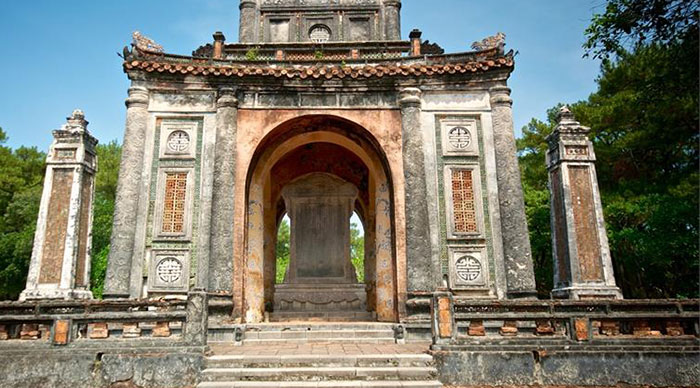
The Royal Tomb of Tu Duc, a poetic place in Hue city
- on Oct 11, 2019 By: BN
Your visit to Hue city will not be complete without a visit to one of the royal tombs nestled in the surrounding valleys including Tu Duc. This is a poetic jewel set in an intricate tomb that you should not hesitate to visit.
The fourth ruler of the Nguyen dynasty and son of Emperor Thieu Tri, Tu Duc reigned from 1847 to 1883. His reign of 35 years announced the end of independence for Vietnam because he could not resist the repeated assaults of the French wishing to build a colonial empire in Asia. In spite of himself, Tu Duc had had to sign a treaty by which he ceded to France the three provinces of the Mekong Delta which became Cochin China. The emperor was also forced to open Hanoi, Hai Phong and the Red River to international trade. Although he lost a part of the national territory, Tu Duc was still recognized by the Vietnamese for his great intellectual activity, especially his fabulous poems, including a piece in Nom in which he mourns his favorite wife, Bang Phi. The absence of descendants at his death, in spite of more than 100 wives and concubines, engendered a monarchical crisis which benefited France to impose protectorate status upon the whole country.
From the palace of Eternity to the palace of Modesty
The Tu Duc tomb is located in a narrow valley, in the middle of an immense pine forest. 8 km from the center of Hue, it sits peacefully on the eastern bank of the famous Perfume River. The tomb also served as a country residence where the emperor liked to compose poems, especially to express his faults and regrets. He liked to go there to walk around and forgot the worries of national affairs and his family problems.
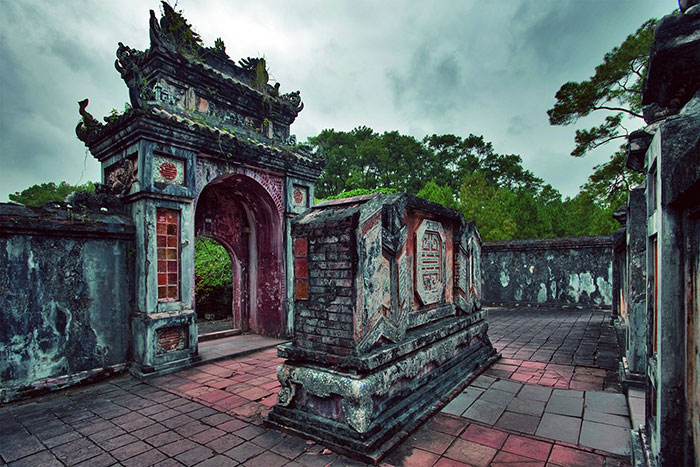
Also called Khiem Lang, Tu Duc tomb is known by its great beauty, its enchanting natural setting that reflects the romanticism of the ruler. Besides, Tu Duc himself designed his tomb, the construction of which took almost two years and wih the participation of 50,000 soldiers. Located in the middle of a pine forest and measuring over 12 hectares, the site consists of a lake, an island and extensive gardens. It also includes 50 architectural constructions spread over with a wide variety of plants. First named palace of Eternity, it was later named palace of Modesty because of violent criticism from the intellectuals of the court following the revolts of workers which were repressed in a massacre.
The architecture of the Royal Tomb of Tu Duc
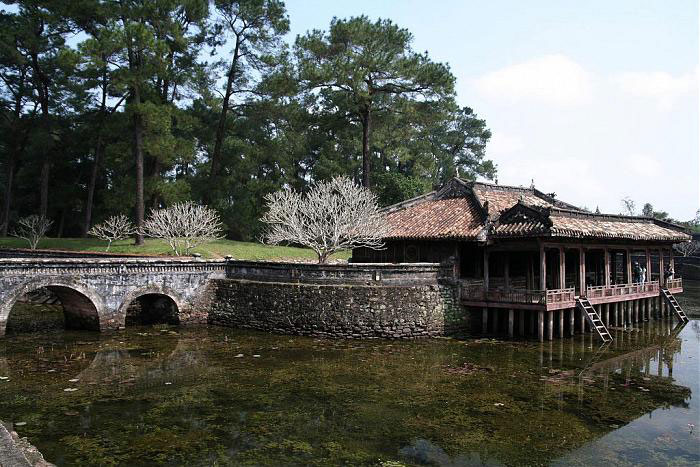
After crossing Vu Khiem gate and the temple dedicated to the genie of the Mountain, Khiem and Son, we follow Lake Luu Khiem to access, an imposing staircase on the left side rising towards the palace of Modesty. At the rear of the first building is a small courtyard flanked on the right by the imperial wooden theatre. It is the oldest in Vietnam. The concubines of the Emperor gave performances to entertain him. Granite steps lead to the Khiem temple and then to the Hoa Khiem temple, once the work place of the king, where the memory of the Emperor and his wife is now honoured. Not far from there is Luong Khiem temple, built in memory of the Emperor's mother. Further to the right is Khiem Duong Temple, where the king's personal belongings are stored.
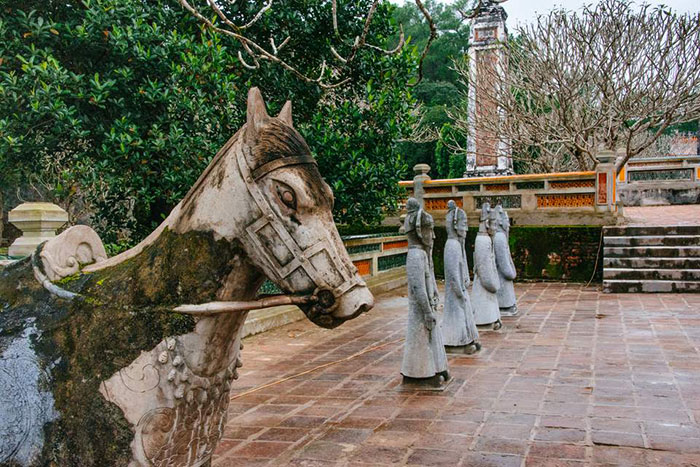
Going up the winding paved path of bricks along the shores of the lake, we finally arrive at the area of the tomb which is composed of a court of honour with two rows of statues. These beautiful creations include mandarins and their mounts, horses and elephants, a half-moon pond, the Stele Pavilion and the enclosure of the tomb (Buu Thanh). On the Stele is carved a text of 4935 words, written by the sovereign himself and which tells the whole story of his tumultuous life, his adventures and his reign. The imposing stele weighs 20 tons and was pulled by elephants over a distance of 500 km, taking months to complete the journey. On either side of the pavilion, two pylons symbolise the power of the sovereign.

Finally, located on the hill on the other side of the half-moon lake Tieu Khiem Tri, is the tomb itself, the Buu Thanh. Made of bricks and protected by bronze doors and a traditional screen which is supposed to repel evil spirits. Compared with the sumptuous architectural ensemble, the tomb is surprisingly modest. Firstly, the Emperor was never buried there. The place where he rests was kept secret to avoid looting. A legend says that the 200 servants who were responsible for the funeral were beheaded. Another version states that deaf-mutes from the remote mountains of Annam carried out the task.
How to get to the Royal tomb of Tu Duc?
The Tu Duc tomb is located only 8 kilometres from the city of Hue on the east bank of the Perfume River. There are several ways for you to discover this fascinating work of architecture:
+ By car with a driver and your guide if you have used the services of a local travel agency. By taxi, it’s about 10 euros for a return trip. From the city cenre, it takes about 20 minutes to get to Tu Duc tomb.
+ By taking a cruise on the Perfume River. You can do half a day or a full day with lunch on board if you want to discover more imperial tombs. It is a beautiful way to discover the magnificent countryside of Hue where you’ll be surrounded by graceful mountains and can observe the peace of nature.
+ The most interesting way that can get there is by bike. It is a very beautiful journey that can be combined with the visit of other tombs and some sightseeing places like the Pagoda of the Celestial Lady and the garden houses of Hue
Related articles:
>> Hue Imperial city - A to Z Travel guide
>> Thuan An beach A-Z Travel guide
>> What to do in Hue in 1 or 2 days?
>> Minh Mang Royal Tomb, architectural jewel of Hue
Comment
Other Blog
Categories
Latest News
on 27 Apr, 2023      
on 15 Apr, 2023      
on 28 Mar, 2023      
 Español
Español Français
Français










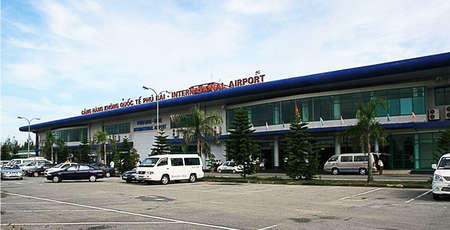
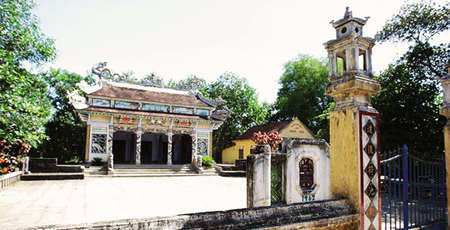







F
on Jan 3, 2024Igor Mozetic
on Apr 8, 2023Ira Beale
on Feb 10, 2023Phạm Phú Toàn
on Jan 28, 2023Max Stover
on Jan 11, 2023